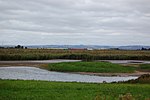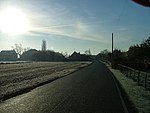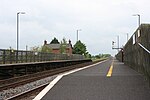River Ouse, Yorkshire

The River Ouse ( OOZ) is a river in North Yorkshire, England. Hydrologically, the river is a continuation of the River Ure, and the combined length of the River Ure and River Ouse makes it, at 129 miles (208 km), the sixth-longest river of the United Kingdom and (including the Ure) the longest to flow entirely in one county. The length of the Ouse alone is about 52 miles (84 km) but the total length of the river is disputed. It is a matter of opinion as to whether the River Ouse is formed at the confluence of the River Ure and the much-smaller Ouse Gill Beck at Cuddy Shaw Reach near Linton-on-Ouse, about six miles downstream of the confluence of the River Swale with the River Ure. An alternative opinion is recorded in a publication published in The Yorkshire Post in a series dated 1891, written and illustrated by Tom Bradley. His description and bird's-eye-view maps—specifically in his account of the River Swale—suggests that the River Ouse starts at the confluence of the Swale and the Ure. His narrative states that the Ouse has no specific source, simply flowing from the stated confluence until it runs into the Humber at the confluence of the Ouse and Trent. Continuing the path of the Ouse downstream from Linton-on-Ouse, it then flows through the city of York and the nearby towns of Selby and Goole before joining with the River Trent at Trent Falls, near the village of Faxfleet, then entering the Humber estuary. The Ouse's system of tributaries includes the Derwent, Aire, Don, Wharfe, Rother, Nidd, Swale, Ure and Foss. Together they drain a large part of the Pennines, and much of the Yorkshire Dales and North York Moors. The Ouse valley is a wide, flat plain; heavy rainfall higher in the river's drainage basin can bring severe flooding to settlements. In recent years York, Selby and villages in between have been flooded.
Excerpt from the Wikipedia article River Ouse, Yorkshire (License: CC BY-SA 3.0, Authors, Images).River Ouse, Yorkshire
Geographical coordinates (GPS) Address Nearby Places Show on map
Geographical coordinates (GPS)
| Latitude | Longitude |
|---|---|
| N 53.702222222222 ° | E -0.69611111111111 ° |
Address
DN14 7YR , Blacktoft
England, United Kingdom
Open on Google Maps











